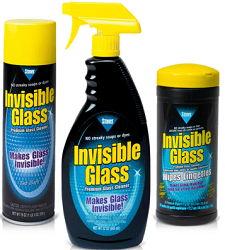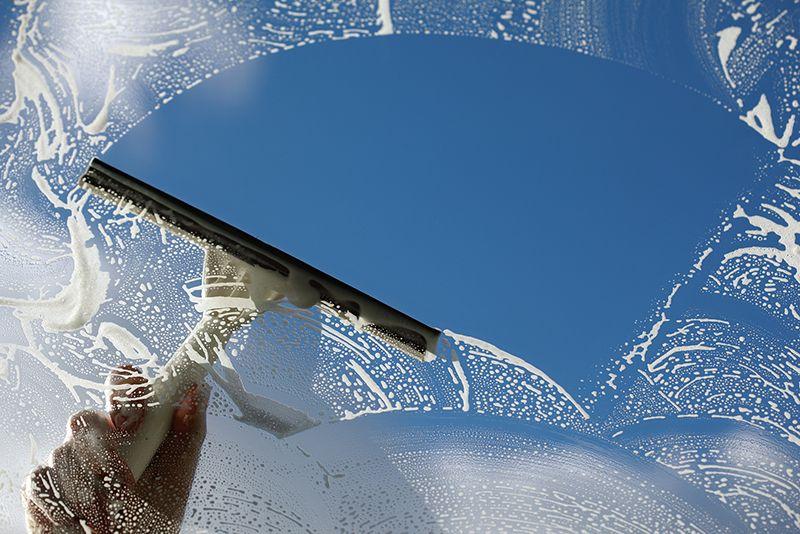One of the main reasons vinyl is such an attractive material to window manufacturers and homeowners is that compared to wood, it requires a lot less maintenance over time. When manufactured from quality PVC, your windows are supposed to maintain their look and colour for over 25 years. Unlike wood, vinyl windows require just a wipe down and don’t absorb excessive moisture like wood windows. They also don’t need to be scraped or repainted.
But even the best windows require some maintenance and cleaning. And a lot of it comes to cleaning the glass panes – after all, they make up the bigger and most noticeable part of the window. In the end, no matter how efficient or advanced your windows are, sooner or later you will need to clean the glass inside and outside.
Most home care websites and references recommend cleaning windows inside and outside every few months or at least twice a year. While you may want to trust a professional company to clean your windows once in a while, especially in hard to reach places, this is very much a task you can accomplish yourself as a part of your bigger cleaning routine in the house.
Window cleaning comes down to properly cleaning the frames and the glass panes. As we mentioned above, vinyl frames are fairly easy to clean and maintain, so the majority of your attention will be devoted to ensuring the window glass is made clean, and dirt and streak-free.
Glass Cleaners: What Materials To Use?
So what should you use to clean the glass and make sure it doesn’t have streaks? By far, the best tool to wipe the glass with is a squeegee. While squeegees maybe a little more difficult to use at first, they can often extend to reach windows above ground, and clean all corners of the glass. Another useful tool is a microfiber cloth or a chamois. These are more common and traditional and are great because they don’t leave lint behind, and the glass panes end up being truly debris-free. Many homeowners also swear by using newspaper to clean windows and glass surfaces in their home. While the newspaper may leave a streak-free glass behind, it can certainly “bleed” ink onto the frame of the window and leave your hands dirty if you’re not wearing gloves.
Try to stay away from using paper towels when cleaning the glass as they often result in streaks once the glass is dried.
Streak-Free Solutions
Now that you have an idea for some cleaning tools, it’s good to figure out which cleaning solution will be best for your cleaning purposes. While there are many commercial glass cleaners on the market today, many homeowners still swear by homemade compounds for best results.
The most popular of these compounds is a white vinegar solution. Vinegar is a great non-toxic cleaner that is safe to use around kids and pets. It is not harmful if accidentally inhaled or swallowed and often costs even less than store-bought glass cleaners. There are different ways you can make a glass cleaning solution out of vinegar, and different websites recommend different ideal proportions, but for the dirtiest cases, you can try a one-to-one vinegar-water solution, decreasing the amount of vinegar in the water if the windows are not too soiled. When mixing the cleaning solution use distilled water instead of tap water. Minerals in tap water can result in streaks even if all the right tools and methods are used. Over time, the glass surface can also develop a waxy film that is not always easy to scrub or wash away. Add some dish soap to your vinegar compound to ensure it breaks down the grimy film and the vinegar part can properly clean the glass.
If you’re not the home chemistry type and are looking for a good commercial cleaner look into getting “Invisible Glass” to give your windows a streak-free shine. “Invisible Glass” is an excellent window cleaner that does not contain soaps, scents, dyes, or ammonia. It’s great because it evaporates quickly so you can have a streak-free clean window without residue or haze. It will work on your glass doors and windows, so you can look forward to gleaming sliding patio doors, and invisible kitchen windows, along with all the rest of the windows in your home.

The company recommends using newspaper, low lint cotton cloths, or micro fiber towels to clean the windows with. They do not recommend using paper towels as they may contain softening agents that can cause streaking or leave a haze on the glass.
Now that you have some ideas for tools and cleaners that can be used, let’s get into the actual process of cleaning windows.
How To Clean Your Windows: Step-by-Step
- Make sure you’re cleaning your windows on a cloudy day, or that there is no direct sunlight going through the window. You’ll be able to see any dirt and streaks better.
- Prepare your window cleaning solution. It may take a couple of cleans to figure out exactly the ratio of water, vinegar, and dish soap that works best for you, but if you clean windows more often you’ll require less vinegar and soap.
- Prepare all your tools and have them handy. You don’t want to be running around the house getting things when the windows are wet.
– cleaning solution in a bowl, small bucket, or spray bottle.
– cleaning tools like squeegee, microfiber cloth or newspaper.
– cotton swabs or an old tooth brush to clean in the corners of the frame and small openings. - Clean the inside of the home first. The outside glass is usually much dirtier and will require you to change the water if you do it first.
- Lay a towel on the window sill to help absorb excessive water run-off. This is especially important for wooden windows as the wood materials will absorb the water if not covered.
- Spray the cleaning solution on the glass surface, or dip the cloth in the bucket and apply the solution to the window surface.
- Wipe using circular motions, then vertically, and finish off with horizontal wipes to complete the cleaning.
- Make sure there isn’t a lot of excessive water, or use a clean microfiber cloth to wipe up any remaining moisture.Some experts also suggest wiping your glass opposite ways on the inside and outside (ie. horizontal strokes on the inside and vertical strokes on the outside.)Don’t leave water standing on the sill or jambs of the window.
- Use the cotton swab or the tooth brush to clean the corners and edges of the frame.
- Rinse and dry the window frames immediately to avoid any damage.
Find out everything you need to know about window replacement and cleaning:
One Thing You MUST Know Before Scheduling A Window Replacement Quote
Challenges With Sun Facing Windows: What You Should Know

